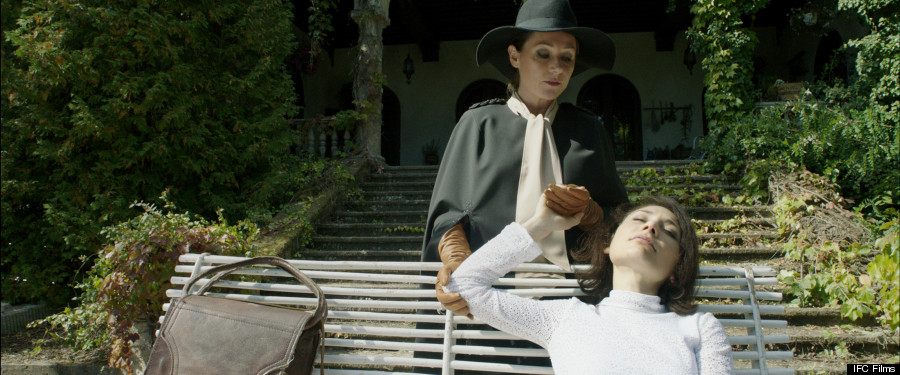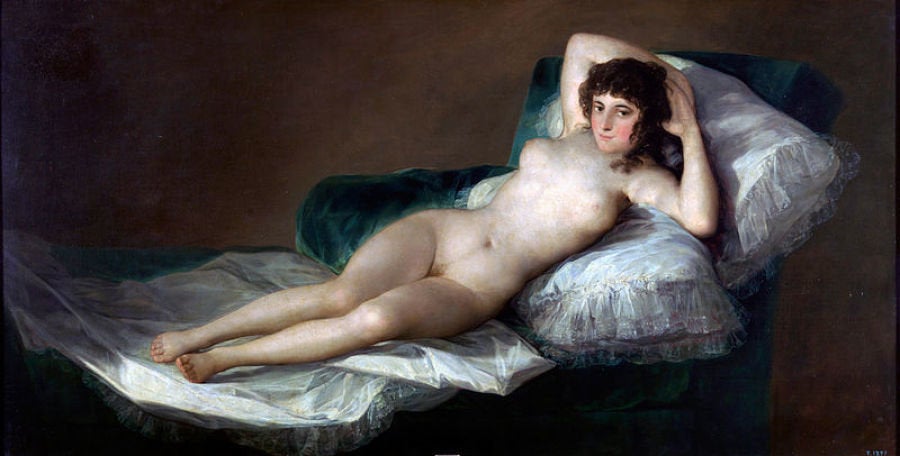It's easy to call “The Duke of Burgundy” a period drama about a lesbian S&M relationship, or perhaps even describe it as “Blue Is the Warmest Color” meets “Fifty Shades of Grey” in the style of ‘70s sexploitation films. But each of those are mere labels that distract from an intricately layered third film from British filmmaker Peter Strickland (“Berberian Sound Studio”).
“The Duke of Burgundy” examines intimate female relationships unlike most films before it, with some exception for Rainer Werner Fassbinder’s 1972 “The Bitter Tears of Petra von Kant" that similarly featured an all-female cast. There’s something different and captivating about “Duke,” which is essentially the paragon of passing the Bechdel test: there isn’t one mention of the male gender (besides the title itself). Set in a fictional world where only women exist (even the mannequins in the background of one scene are dressed female), the gorgeously shot “Duke” follows the S&M relationship of two women with opposing needs. Evelyn (Chiara D'Anna) is the masochist in need of sexual and psychological torture, inscribing the details of her desires on note cards for her partner Cynthia (Sidse Babett Knudsen) to enact -- what to say, how long to wait and what punishment to carry out. Yet as time goes on, Cynthia finds the role-playing and consensual abuse grating on her sensitive, loving nature.

With that description alone, “Duke of Burgundy” could easily sound like a film rife with erotic sex, and the work could even fall into the same controversy Abdellatif Kechiche faced as a male filming a sex scene between two women. But there’s actually very little sex in the film at all, as the doors are usually closed (literally) most of the time Evelyn experiences her punishment, leaving more of a focus on the emotional cause-and-effect rather than the act itself. In an email interview with Strickland, the writer-director told The Huffington Post that while much of “Duke” was inspired by the films of Jess Franco, Walerian Borowczyk, Alain Robbe-Grillet and Jean Rollin, to name a few, his film doesn’t function in the same ways.
"Should there be a timetable on the wall for whose turn it is to get off?”
“The Euro sleaze films are mostly a male heterosexual's idea of lesbian erotica made for a mostly male heterosexual audience,” Strickland told us. However while that genre was in itself an appropriation of lesbian erotica, Strickland says, in retrospect, he views “Duke” as an appropriation of an appropriation: "The only difference is my end goal is not to get people off.” Instead, he used the erotic as a means to explore the “transactional nature of desire and how consent veers into compromise and even coercion.”
"Duke of Burgundy" clearly isn’t a film to titillate viewer’s latent fantasies or attempt to tell a love story from a woman’s perspective. Strickland says he acknowledged his male presence and gaze from the start; he attempted to “be less male in [his] vision by paying less attention to anatomy.” The lack of sex scenes is also likely the reason Strickland hasn’t come under fire the way Kechiche had. But this is also perhaps due to the film's emphasis on intimacy over sexuality, on the emotional torture one experiences as partners cause pain (or pleasure) for the ones they love.

Setting his film in a world without men, and where “sadomasochistic expression is the norm,” “Duke” is at once both unrealistic and relatable. Strickland admitted that the fictional, fantasy realm of the film is a “preposterous” one, but one that was necessary for his story. Yet he also doesn’t classify his characters as lesbian, or “Duke” as queer cinema. On one hand, Strickland is hesitant to label them queer since by existing in a one-gendered world his characters could not “be considered gay in a classic social context.” But he also said he wouldn’t define it as a “heterosexual straight film either,” as the issues between Evelyn and Cynthia are ones he believes are “universal whether one is gay or straight, into kink or not.”
Through stripping away any social or political issues concerning gender and sexuality, as well as sexual taboos that may exist in a contemporary society, Strickland gets at the questions of codependency, power dynamics and compromise inherent in any relationship. By normalizing perverse sexual behavior in his fantasy setting, “Duke” further challenges us to look at relationships from a new perspective. This is even apparent through the stylized editing of the film as it jumps back and forth to reveal both women’s perspectives on their agreed role-playing, painting each as victims within their own contexts.
“It doesn't matter how niche or vanilla one's intimate needs are,” Strickland said. “It could be the most common bedroom activity, but what if that activity is neutral, distasteful or even repellent for one partner? Should there be a timetable on the wall for whose turn it is to get off?” Using sadomasochism as an entry point for these tough questions about pleasure -- and selfishness versus selflessness -- in a relationship is just part of the brilliance of “Duke of Burgundy,” and hopefully it's a film where audiences will leave expectations at the door.
“There are too many people ready to judge,” Strickland said, “and if this film can neutralize a few wagging fingers, that's a bonus.”
"The Duke of Burgundy" is now playing in select cities.
